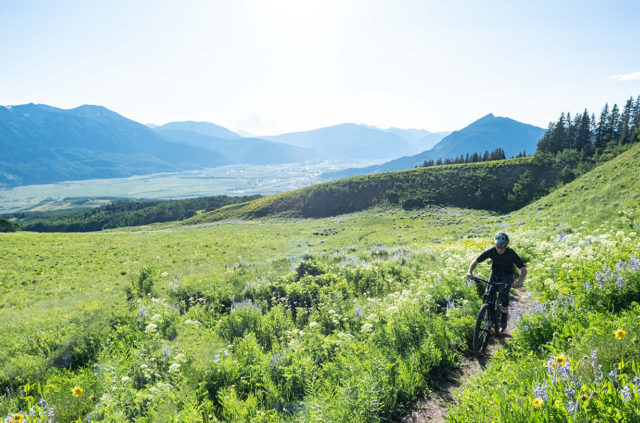
Intro
There are a ton of different mountain bike pedals options out there, and a number of different clipless pedals where the differences aren’t always obvious. So we asked a few of our reviewers about which pedals they typically use, and why.
We’re starting with four reviewers who all mostly use different clipless pedals, and we’ll be adding some other reviewers’ thoughts going forward (including some reviewers who prefer to run flats).
And of course, let us know in the Comments Section below what pedals are working well — or not so well — for you.
A Note regarding Various Pedal Systems / Clip Mechanisms
There is going to be quite a lot of talk below about different clipless pedal “systems” or clip mechanisms, including Shimano’s “SPD”; Crankbrothers’ “Eggbeater”; Time’s “ATAC”; Expedo’s “Posi-Fit”; and several others.
Each of these brands uses their own proprietary clip mechanism, and that clip mechanism determines the clip-in behavior and amount of float; the release & retention characteristics of the pedal; and the durability of the clipless interface. Each of these systems uses its own style of cleat, and those are not cross-compatible across different systems.
All of these brands then offer a wide variety of different models within their respective lineups, but they only vary in terms of weight, the materials used, and the platform size & design. The clip mechanism itself is the same across the brand’s lineup.
Ok, here we go…
Time vs. Shimano SPD
I’ve been running Time pedals for about 15 years now. I started on Shimano pedals back in the 90’s, which, functionally, are fantastic. The Shimano pedals are durable, and they have a super positive entry and exit. But they don’t have much float, and even with them tightened down all the way, I’d still pop out of them unexpectedly. I remember trying to scrub over a roller one time, then having both of my feet eject when I pushed the bike sideways. It was terrifying, and it was at that exact moment that I decided to ditch Shimano pedals.
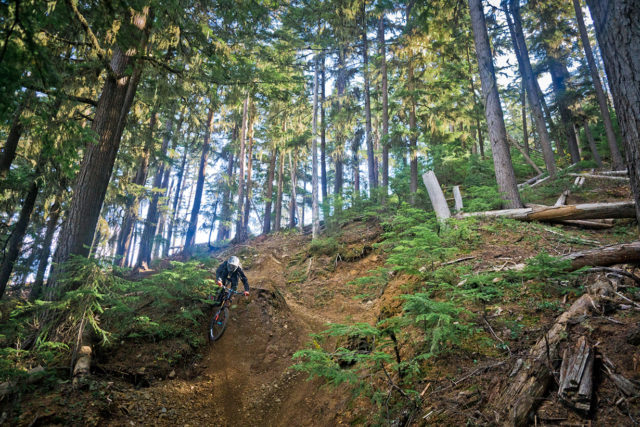
After that, I mostly ran flat pedals for the next 5 years. I had Time pedals lying around, but I didn’t use them that much. Eventually, in search of a more locked-in feeling on my Trail bike, I started riding the Times more often. They have a similarly positive engagement to the Shimanos, and the pedals have held up well for me, but they have a lot more float. The Times can be set up with less (13°) or more (17°) float, either of which is way more than Shimanos (4°). I always run mine in the 17° float position. I personally don’t want to come out of my pedals unless I really mean it.
Crankbrothers Mallet E (vs. Time)
I also tried switching to Crankbrothers last year because I happened to need new pedals, and Times were kind of hard to come by. Years ago, I’d never seriously considered Crankbrothers because they had a well-earned reputation for terrible durability. That’s gotten much better over the last decade, so I gave them another look since Crankbrothers pedals offer similar float to the Times.
I spent a couple of months on some Crankbrothers Mallet E pedals last fall and hated them. I found both the entry and release from the pedal to be pretty vague — they’re not snappy like the Shimanos or Times.
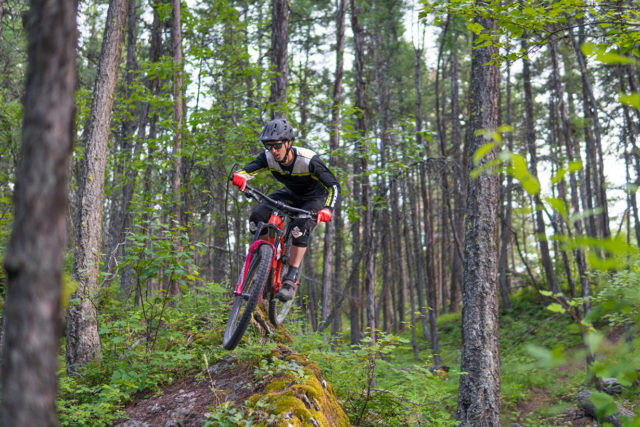
I also struggled to clip back into them quickly; since the bails that hold the cleat can rotate within the pedal, it means that the bails aren’t always in the same place when I go to step back in. So if I pop out a foot in a corner, I had about a 50% success rate getting my foot back in quickly.
The only place where I’d give the Crankbrothers Mallet E pedals the nod over Times is for riding while unclipped — their outer pedal body offers better support than any of the Times or Shimanos I’ve used.
I’m now running assorted Time pedals on all of my bikes except for my dirt jumper (which, of course, still has flats). My DH bike has old Time Z’s, and any bike I’m reviewing gets Time Speciale 8’s, which are my go-to pedal these days. They work great, they’re pretty affordable, and thus far they’re doing well on the durability front.
The very first pair of clipless pedals I owned were the elastomer-sprung Onzas from the ‘90s, but the less that’s said about those, the better.
Shimano SPD (vs. Crankbrothers)
The first clipless pedals I used that actually worked worth a damn were Shimanos, and they remain the clipless pedals that I’ve used the most, by a huge margin. I took a brief foray into using Crankbrothers pedals 10+ years ago, when they were relatively new. Like Noah, I hated them. For starters, their durability was horrendous back then. In a season or so of running them, I broke two pedal spindles and one of the springs that preloads the wings, leaving me stuck with an Eggbeater that I couldn’t clip into during the middle of an XC race. I also burned through bushings and bearings at an alarming rate. To their credit, rebuild kits were cheap and readily available, but the frequency with which I had to resort to them was outrageous.
Crankbrothers have supposedly improved the durability issues, and I have one friend in particular who rides hard and often and who seems to be keeping his newer pedals in one piece, lending some credence to that claim. However, durability wasn’t the only factor that lead me to run (screaming) back to Shimano.
For one, the Crankbrothers release tension is far, far lighter than I wanted it to be, and I found myself regularly accidentally releasing from them with my outside foot when pivoting my hips through a corner. On top of that, the scissor action of the wings also means that impacts to the bottom-side of the pedal are prone to causing them to release. They are very easy to release from, which might be desirable for some, and they shed mud exceptionally well. But I never got along with them at all.
Shimano pedals have treated me much better, but I’ll also freely admit that a certain amount of inertia has kept me from experimenting more with pedals — I’ve got four bikes that often have SPD pedals on them (I do ride flats a lot, too), and three pairs of shoes with SPD cleats, and would be more inclined to check out other clipless pedals if I wasn’t so invested in the Shimano system. Having different shoes and bikes with incompatible cleats / pedals is a pain in the ass that I’ve been reluctant to take on, and I similarly don’t want to buy a whole pile of pedals to try a different system that I’m not already sold on.
I’ve had comparatively few durability issues with Shimano pedals — I have bent two XTR Trail spindles, but both were still rideable. And one of those impacts also resulted in a bent Saint crank arm, so it’s a bit tough to fault the pedal for that one.
I do wish that Shimano had rebuild kits more readily available. I’ve had to retire pedals that were otherwise in good working order due to the bearings wearing out and developing a bunch of play, but that’s taken years and years of abuse to crop up.
Also, in contrast to Noah’s experience, Shimano’s relatively small amount of float suits me well. I ride flats a lot too (especially in the winter) and when I go back to clips, I often don’t love the feel of having a bit of movement between my foot and the pedal. I get used to it quickly, but it can feel a little unnerving to me in the first few corners, and more float would probably feel even more unnerving.
An Aside on Flat Pedals…
While I probably ride either XTR Trail or Saint clips 75% of the time, I do ride flats a fair bit as well, and have a few thoughts on their use.
For starters, I’d absolutely recommend that beginner riders start out on flats – and do so with proper MTB flat-pedal shoes – and consider making the jump to clipless once their riding has progressed a bit. Flats will be easier and safer for a novice rider to use, and will allow them to focus on developing more fundamental aspects of their riding without having to worry about clipping in and out. Learning on flats will also help build better fundamentals in terms of weighting and unweighting the rear wheel and moving the bike around without using the clip connection as a crutch to pick up and move the bike around.
In general, riding clipped in is definitely more efficient when climbing – less because I can really “pull up” on clips, but more because it’s just easier to spin smoothly and quickly when I’m not having to pay attention to keeping my feet on the pedals, and have the positioning locked down. In rough, technical descending, clips can help keep my feet from getting blown off the pedals, and again, eliminate the need to think about and maintain my foot’s position on the pedals. In any kind of race scenario, be it XC, Enduro or DH, I’m definitely faster clipped in.
That said, flat pedals also have their advantages, even for more experienced riders. Being able to quickly throw a foot out in a corner and get back on the pedals without clipping back in can be a benefit, especially in loose, steep terrain. Flats can also offer a more direct-feeling connection to the bike, without any float or rocking between the shoe and pedal to mute that connection. Being able to move my feet around on the pedals can also help with body positioning when cornering or riding very steep features and needing to get off the back of the bike, or for riders (such as myself, at present) dealing with knee or ankle injuries that benefit from a less locked-in, less constrained connection with the bike.
Flats are, of course, the way to go if you’re trying to do any sort of tricks involving taking your feet off the pedals, or even things like turndowns where your feet aren’t coming all the way off, but need to move a fair bit on the pedal to move the bike around.
I’ve also found that, even when wearing otherwise similar shoes, my feet stay a lot warmer in the winter when running flats. I attribute that to not having the steel cleat-bolt plate right underneath the insole, acting as a heat sink. Between that and not having to deal with clip mechanisms jamming with mud / snow / ice, I greatly prefer flats in the winter.
HT Pedals
If I were to try a different pedal system, HT pedals are currently the most intriguing to me. They use a similar design to Shimano, but supposedly have stiffer springs that can be tightened up more, which wouldn’t hurt, since I usually run my SPD’s maxed out.
The HT pedals, in most cases, also come in a little lighter than their Shimano counterparts. HT also offers cheap rebuild kits and replacement spindles to keep older pedals running.
That said, I’m still more than happy enough with my SPD’s to be disinterested in making a leap to anything else, unless my pedals all explode at once. But I do hope to review some HT pedals soon, and we’ll find out whether riding is believing.
Shimano M50 SPD & M545 / M424
The first set of clipless pedals I started riding were the basic Shimano M50 SPD. But then I wanted more stability, so I switched to the M545 / M424, which has a metal and plastic cage acting as a platform around the SPD clip.
Being the only clips I had any experience with, I thought they were great, especially the durability of the cleats, and the ability to adjust release tension to my liking. I did have multiple issues with shearing off the outside screw connecting the cage, but overall, these were solid pedals.
Crankbrothers Mallet E
From there I decided to try out Crankbrothers. Looking for a clipless pedal that catered to a more downhill style, I turned to the Mallet series. It took some time to get used to the Eggbeater system compared to SPD, but I was keen on how much float the Eggbeaters offered, as well as the almost effortless unclipping / clipping back in.
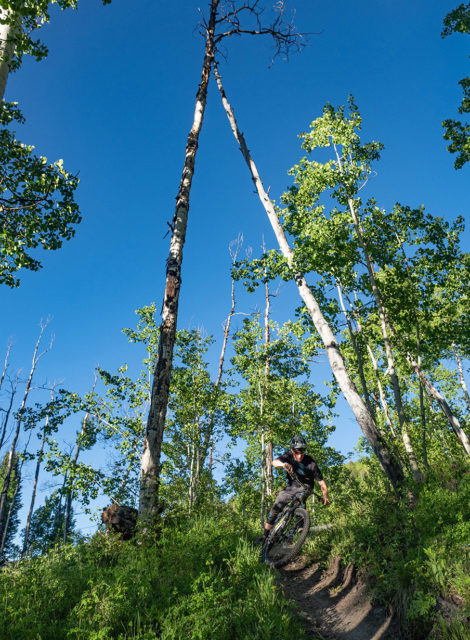
Another plus that I had yet to experience was having metal pins around the wide platform of the pedal. This gives me confidence when going through a technical section in the case that I am unable to clip back in. My initial experience with the Mallet was awesome, but soon enough, the spring tension was no longer there, the composite body was falling apart, and the bearings seized up.
Crankbrothers Mallet DH
Having learned that I liked the float and release system of Crankbrothers pedals, I upgraded to a more robust version, the Mallet DH. It offered a wider platform, adjustable pins, and ease of access for replacing bearings (which is a plus). The Mallet DH is a pedal that I truly enjoy riding on. In fact, I have ridden them for about four years now. The only downfalls were the durability issues, and they were pretty significant. When racing consistently, I cruised through sets of cleats almost monthly, and I’ve been through three different sets of Mallets. I even clapped out one on a rock and the pedal slid off of the spindle still clipped on my shoe….

Despite those (previous) issues with durability, once I got a feel for the Eggbeater system, clipping in and out has become second nature for me, allowing for split-second reactions and overall stability through varying conditions. And Crankbrothers does seem to have addressed at least some of the durability issues — my current set of the Mallet DH have had no issues during the past season.
Expedo GFX Pedals
But then last year I got my hands on a set of Expedo GFX pedals. In my opinion, these pedals seem to bring out the best aspects from both Shimano SPD and Crankbrothers’ Eggbeater system. The Expedo clip mechanism resembles the common Shimano SPD system, but Expedo calls it their “Posi-Fit” platform. (And FWIW, using Expedo’s own XPT cleat works surprisingly well with SPD pedals.) The GFX also features a spring that positions the front claw of the pedal’s clip mechanism in an upward position for easy and fast cleat engagement.
Another addition is that the entry and release spring tension is fully adjustable and easily tuned to rider preference, which is something that Crankbrothers has been lacking.
The GFX has a what I’d generally call a “good” amount of float. Expedo states that there is only 6°, but to me, the release and clip-in feels similar to Crankbrothers’ Mallet DH.
One of the biggest perks about the GFX pedals is the sleek platform and angled front edge of the pedal body, which I think does a nice job of deflecting roots and rocks. The construction of the pedal body and quality of the bearings is also exceptional. Even after a season of abuse, the XPT cleat still feels snug when clipping in and out.
Overall, I have had no complaints or issues with the GFX pedal. It’s got a fairly minimal design, the wide, stable platform of a flat pedal, and the power transfer and control of a clipless pedal. The Expedo GFX has now become my go-to, and I think it’s worth a look when considering a DH / Enduro pedal.
Shimano SPD pedals vs. Crankbrothers
The Shimano SPD M737 pedals (which came on a brushed-aluminum GT Avalanche) were my first set of clipless pedals.
Like both Noad and David, I started out and stayed in the Shimano camp for most of my early life. (This also included some Ritchey pedals, but everything was always SPD.) I first seriously entered biking through cross country racing, and so never had any real experience with flats outside of early bikes. Wish I did!
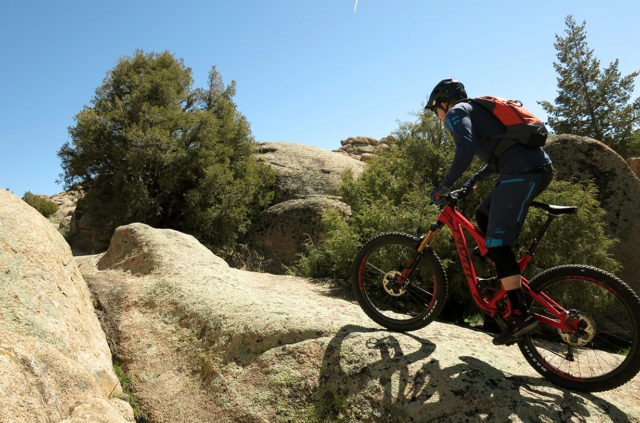
I eventually moved from SPD to Crankbrothers (Mallet E model) for easier entries and exits on the muddy East Coast. Just like Noah, I experienced tons of issues with early pedal durability — breaking wings, bending spindles, and bushings generally falling apart. But access to rebuild kits (as well as a readily available proform) made the required service quick, and replacement intervals easier to bear. Why bother rebuilding when you can just buy a new set, right…?
Crankbrothers quality has improved over time, and as David points out, the number of bikes and shoes I own that are running Crankbrothers setups makes me reluctant to change things up.
Unlike Noah, I really do enjoy the more relaxed feel of the Crankbrothers pedal / cleat interface in comparison to other designs with more pronounced entry and exit feels. The Crankbrothers pedals have a high degree of float, relatively low release tension, and help me to feel relaxed and loose on and over the bike. I tried the newer Shimano XT Trails several years ago and didn’t enjoy the “locked-in” feel as much, and they made me stressed, feeling like I was frequently hitting a wall of release tension with a smaller amount of available float.
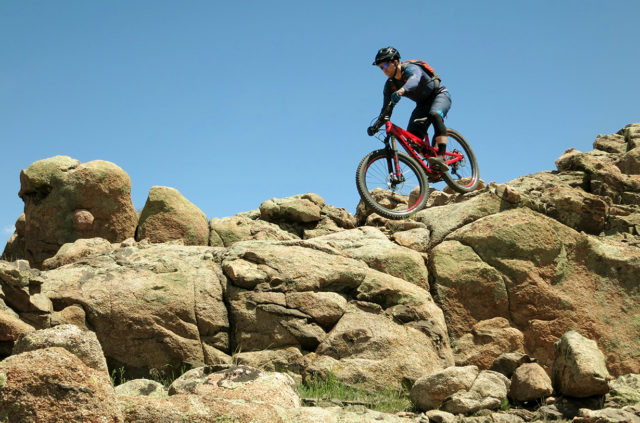
My biggest complaints with Crankbrothers these days is the rotating bail, which discourages me from putting a foot out too frequently given that I often have hit-or-miss first-try reentries, and the bearings still have a relatively short lifespan before play develops on the spindle.
I’m in no way brand-loyal to Crankbrothers, and I think about trying something new pretty much every season.
Xan Marshland
Shimano SPD Pedals
Except for my very early days spent jumping cheap mountain bikes off stairs using horrible plastic flat pedals, nearly all of my riding has been spent using some variety of SPD pedal, whether that’s the XT Trail, XTR Race, XTR Trail, DX, and many years ago, a variety of Shimano’s lower-end XC pedals.
Only recently have I begun playing around with flats again, and while this experience has been an entertaining and educational experiment, it’s mostly solidified my reasoning that clipping in — regardless of which brand you choose — is a worthwhile endeavor for most. It’s easier to apply more consistent power through the pedal stroke, resulting in better traction. It makes me feel more controlled and anchored, especially through fast, rough sections. And besides a few notable celebrity exceptions, I find that those things generally allow you to ride faster.
In contrast to Noah and Eric’s comments about pedal float, I tend to like the very minimal float that SPD pedals provide. With the retention nearly maxed out, I generally don’t have any catastrophic accidental releases when throwing the bike around. I think the majority of folks that generally identify as Trail riders are unlikely to find any issues either.
I also derive a weird amount of joy out of obsessively tackling extremely technical, ledgy climbs, where being able to snap out of my pedals at a moment’s notice is crucial. The SPD pedals’ minimal float is a bit of a confidence booster in these situations, as you don’t have to twist your foot very far to hit the eject button.
Of all the SPD pedals I’ve spent time on, my favorite remains the DX, which was the go-to Shimano SPD DH pedal before Shimano released the Saint SPD. Unlike its daintier Trail siblings, the DX has a bit of actually usable platform on the cage. Durability is fine, though cracking the outside of the cage isn’t impossible if you smash it hard enough. But I think the best part of this pedal’s design is that the pedal’s inner SPD receiver can rotate slightly within the cage, which I find makes the pedal easier to get back into in a hurry. Simply kick forward and down, and your cleat will find its way into the pedal. In comparison, I find that Shimano’s Trail pedals are a little more likely to deflect your cleat if you’re a little vague or inaccurate when trying to clip back in at speed.
Luke Koppa
Flat Pedals (Crankbrothers Stamp 1)
First, some background info: I just got into biking. And by “just,” I mean, like, four months ago. But I’m now fully obsessed, and have been riding almost every day this summer in Crested Butte.
As a beginner, clipless pedals still freak me out a bit. I like being able to get off and on my pedals in a truly effortless manner. The idea of being locked in when I lose control or having to re-clip in the middle of a techy section is scary, and I think a lot of beginners like me agree.
So, I use flats. Not because I’m always doing super sick drifts or supermans or tailwhips. It’s because I fall a lot, and I want to be able to put my foot out at a moment’s notice.
It’s also because I suck at climbing, and don’t care much about efficiency.
Lastly, I’ve been told that starting with clipless pedals can make you get lazy when it comes to technique, since they easily let you move around the rear end of the bike because your feet are attached to the pedals. Being a beginner, I figured I might as well try to learn basic techniques with flat pedals in hope that it’d make me a better biker. But really, my decision to go with flats mostly comes down to not being able to immediately unclip during my frequent tumbles on the trail.
Simply based on the fact that every good rider I know runs a clipless setup, I think I will eventually make the switch. But for now, flats are a-okay with me.
Right now, my bike has Crankbrothers Stamp 1 pedals on it. I went with these mostly based on the recommendation of the folks at the Elevate Bike Shop at the base of Mount Crested Butte. They run Stamp 1’s on a lot of their demo bikes and praised their durability, even more so than the alloy-body Stamp 2. (They had one renter who accidentally dragged one of Elevate’s bikes up a 2-mile stretch of pavement behind a bus, and the Stamp 1 pedals were one of the few things on the bike that weren’t destroyed…)
Overall, the Stamp 1 has done the trick for me. I’ve tried both the size Large and Small and don’t have a strong preference between the two (my size-10 shoes fall exactly on the boundary that Crankbrothers provides for sizing).
My only complaint is that Crankbrothers doesn’t provide a replacement option for the pins on the Stamp 1. (They say their replacement pins for the alloy-body Stamp 3, 7, and 11 aren’t compatible with the plastic-body Stamp 1.) I’d prefer to have slightly longer pins — I’m fine with having more scars on my shins in exchange for better grip. But after several hundred miles, including a lot in the bike park, the Stamp 1 is still functioning perfectly so far, and I’m in no rush to replace them.

The first generation Speedplay Frog was an amazing design.
Self cleaning u-channel cleat with lots of float. Self centering, double sided pedal for eye’s free engagement (and a mostly flat pedal for when you didn’t want to clip in). Very simple design, minimal moving parts. Bullet proof.
I’m, enjoying the Speedplay ZYZR although my use is gravel racing. Nice adjustable float, ease of entry (once you figure out you have to point your foot down), and very predictable release.
My pedals since 1994… mini review, plus number rating for performance Trail Use… GO!
OG Ritchey – Spray lube plus max spring tension does work. 5/10
OG Speedplay Frog – Slippy-comfort like socks on polished hardwood. Get a grease gun. 6/10
Shimano SPD-747 – Classic! Good for 20+ years, but don’t hike in mud. 8/10
Time ATAC – It’s wrong for your favorite shoe. 7/10
Crank Brothers Eggbeaters and Candies – Rebuild them eight days per week. 7/10
OG Shimano DX and generic BMX – Your gonna smash em on the ground! 6/10
Wellgo Magnesium BMX flats – Lite thick juicy shin burger. 7/10
Shimano SPD-520 – Ten bucks more than new cleats. 7/10
Shimano XT SPD-8000 – Deigns to tolerate your humanity. 9/10
OneUp nylon flats – Down for whatever, glances off impacts like a bud. 9/10
I did ride some crankbrothers stamp11 L for 1 year. They were nice. However, I have to stress that I rode them just one year. Because after that time they were not spinning any longer. Now I’m on Nukeproof Horizon Pro pedals on all my bikes. Great value, great performance and great durability.
Dang, I haven’t had any issues yet, but that’s only after less than a half a year. I’ll update this if I notice any issues in the future, and Nukeproof is definitely at the top of my list for pedals to try if / when my Stamp 1’s finally quite on me.
I wish you guys taled to an advanced rider who uses flats. Theres a lot of nuances whith flat pedals but if you really figure out how to use flats they’re great. You can put a foot down in a corner instantly and not have to clip back in. On tech with good technique and shoe/pedal combo your feet don’t fly off with dropped heels. When climbing you can scoop the pedal on the way up and still get the pull up like with cleats to get even power. Plus you can do crankflips and nac naca.
Thanks for the feedback. This is an article that we plan on continually updating, so stay tuned for more reviewers’ opinions. As it is right now, this article is pretty clipless-heavy, simply because most of our reviewers run clipless setups the vast majority of the time.
Luke be interested to hear about your experience with transitioning to clipless when the time comes. I got into riding a few years ago and while I’m now relatively competent (good on all blacks, the odd double blacks in Van N Shore/Squamish/Whistler) the thought of being clipped in when I need to throw a foot out to prevent falls still freaks me out enough to outweigh the efficiency benefits for the climbs.
Definitely — I’ll probably be sticking to flats for the rest of this season, but will be giving clipless pedals a try next spring and will report back.
Currently on DMR Vault Brendogs and I am clipless curious. I’ve spent a decade and a half on drop bar bikes, clipped in and content. As an aggressive all-mountain (I don’t use the e-word unless it’s a race) rider, I see benefits to the efficiency that a clipless setup provides. That said, there’s something comforting to not only being able to dab on command in hairy situations, but in wearing legit comfortable shoes. Solid article. Perhaps the switch will be easier than I assumed.
I started on flats, went to actual toe clips, then went clipless with Speedplay Frogs, but went back to flats more than 20 years ago. My current favs are Xpedo Spry magnesium pedals. They can be found for less than $80 and weigh just 270 grams. Some pedals cost twice as much and weigh twice as much!
I weigh 235 and ride hard in New England rocky, techy stuff. I did crack one magnesium body after a couple of years punishment (about 1/4 of the paint had been worn/smacked off the pedal before it broke), but at that price and weight I am willing to keep buying new ones.
Huh, I need to check those out! Sounds like a pretty killer deal in terms of performance-to-price ratio.
I use Xpedo Sprys too and love them. Light durable grippy and cheap. First pair now 8years old and finally need bearing rebuild. Have second pair to sub in meanwhile.
Loved my old Speedplay Frogs for XC but hated that you can’t release by rotating heel inwards; often in a crash I would find that my outer foot rotated outwards and my inner foot inwards, leaving me still attached to the pedal/bike. This can be fixed by reversing each of the pedals on their spindle, allowing release in both directions, though this exaggerates the sloppy socks on hardwood floor feeling.
TIME MX series well worth a try; very durable, good platform size and grip without vicious pins, great mud clearance, float etc
I have been riding Speedplay frogs since 93, the same pedal. No moving parts, they’re light and indestructible. I’ve replaced bearings and cleats, and that’s it. Mud clearing engagement let’s them work in the slop. Free float takes getting used to. But it allows natural foot position if you have knee pain from tension stress. 20 degrees of float allows foot movement without disengaging. Now it’s second nature to release and have no trouble disengaging when needed.
Hey team, when you update this article, I’d love to hear your thoughts on pedal/shoe combos you like/dislike as well. I think that is a very useful data point.